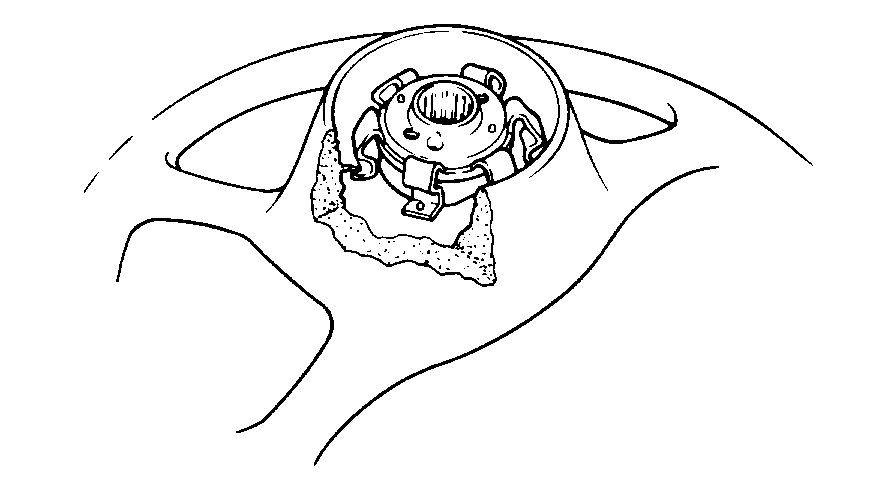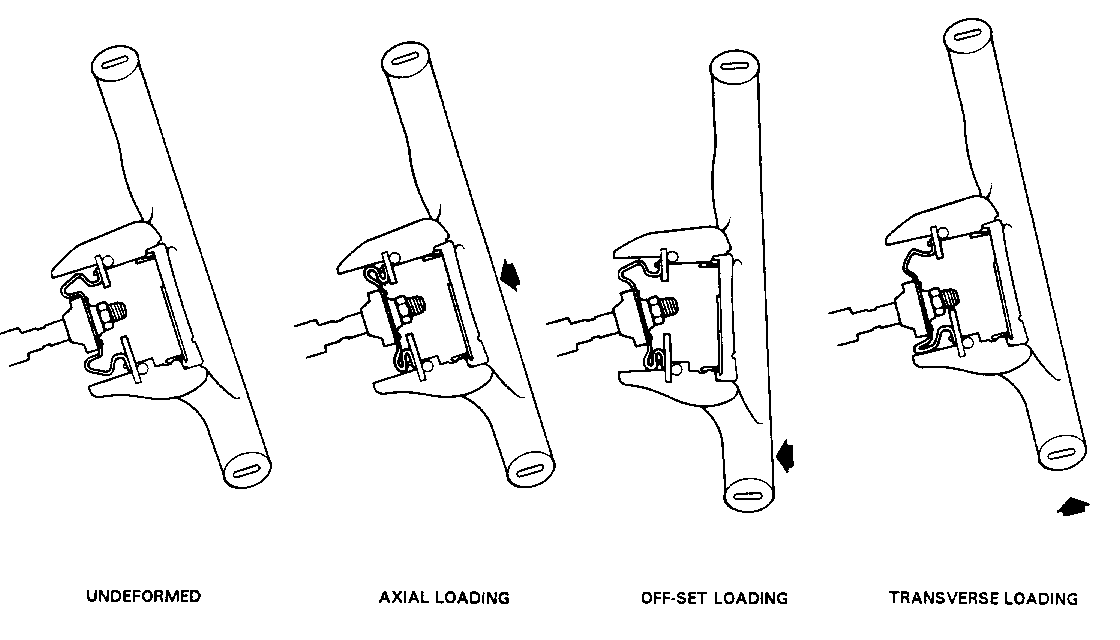SERVICE GUILD: SELF-ALIGNING STEERING WHEEL

Subject: INFORMATION ON THE SELF-ALIGNING STEERING WHEEL
Models Affected: 1992 SUNBIRD AND GRAND AM MODELS
Concerned with injuries related to driver involvement with the steering system during accidents, General Motors developed the energy absorbing steering column in the mid 1960s. It was designed to collapse in a controlled fashion to help dissipate the energy of the driver during the rapid deceleration of a collision. In a frontal impact, with a properly adjusted safety belt, the steering wheel is designed to distribute the impact load primarily through the driver's chest and shoulders.
While this system does an excellent job of reducing potential injuries, the fact is that a high level of energy must be dissipated, in a short time, through the steering column. Because of this, the driver's involvement with the steering system is still a major source of crash related injuries. In 1982, the National Highway Traffic Safety Administration attributed almost 27 percent of all crash related injuries to involvement with the steering system. GM Research Laboratory data has confirmed that driver impact with the steering wheel can cause a variety of injuries to soft tissue organs, face, neck and spine.
General Motors customers have a new safety feature in their vehicles steering systems thanks to improved safety technology developed by GM.
To enhance the safety performance of the steering wheel, GM Research Laboratories joined with GM's Inland Fisher Guide Division and various other GM Divisions to develop an energy absorbing steering wheel assembly. This combined effort resulted in the self-aligning steering wheel which will be standard equipment on the 1992 the Sunbird and Grand Am models.
In the event of a front-end collision where the driver hits the steering wheel, the wheel will align itself parallel with the driver's chest and abdomen no matter how the driver hits it. This self-aligning motion helps spread the force of the impact and helps prevent injuries.
The patented wheel has three sets of energy absorbing components: the hub, spokes and rim. The hub consists of six formed metal "legs" which are calibrated to limit the rigidity of the steering wheel structure. The limit is based on human injury tolerance data that was obtained through GM Research Labs. Like the hub at the center of the steering wheel, the wheel's three or four spokes (depending on the model) and rim are also energy absorbing. They have metal rods contoured to "give" when occupants impact the steering wheel from various angles.
Briefly stated, the design of the wheel assembly is rigid enough. for daily use yet flexible and dynamic enough to help absorb the energy of the driver's forward movement in a frontal collision.
Vehicles with Supplemental Inflatable Restraint Systems (SIR) do not have self-aligning steering wheels since the SIR provides similar protection in frontal impacts.
It is important to remember that the steering system safety features found on today's vehicles are NOT designed to be a convenient substitute for safety belts. To protect all occupants of a vehicle, safety belts must be worn at all times.
If you are involved in repairs on a 1992 Sunbird or Grand Am model that has been in a front end collision, replace the steering wheel if it shows any signs of distortion.


General Motors bulletins are intended for use by professional technicians, not a "do-it-yourselfer". They are written to inform those technicians of conditions that may occur on some vehicles, or to provide information that could assist in the proper service of a vehicle. Properly trained technicians have the equipment, tools, safety instructions and know-how to do a job properly and safely. If a condition is described, do not assume that the bulletin applies to your vehicle, or that your vehicle will have that condition. See a General Motors dealer servicing your brand of General Motors vehicle for information on whether your vehicle may benefit from the information.
